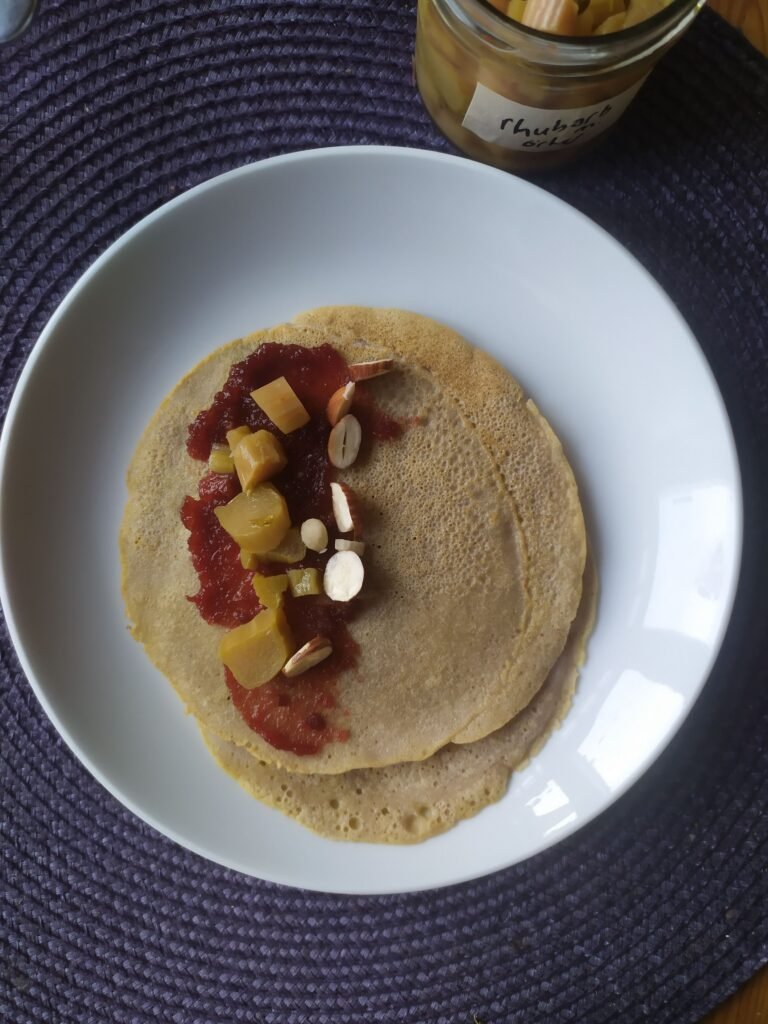Here’s how to do it: Cut the rhubarb stalks into 1 cm pieces, press them into a glass jar, and cover with a brine of 2-3% salt concentration (20-30g of salt per liter of water). Put on the lid and leave at room temperature for 4 days, burping if necessary, and then refrigerate. Place a small plate or a few Sweet cicely leaves on top to keep everything submerged under the liquid surface. I have added rosé pepper and Mexican tarragon/sweet mace with good results. Use it as a starter in pesto or in any recipe where you would normally use lemon juice, such as in hummus. If you find other recipes where rhubarb fits, please let me know and I’ll share them here!

Fermented rhubarb has an indefinite shelf life and can be used as a compote on pancakes, as a substitute for lemon juice in various recipes, or as an exciting addition to canapés.

What about oxalic acid? A study from Lincoln University in 2014 showed that lacto-fermentation dramatically reduced oxalates in the case of Swiss chard. It is likely that the same applies to rhubarb. Read the article here.

Sweet cicely and lovage
You can lacto-ferment rhubarb and sweet cicely separately or together. Lovage tastes better as a vegetable when it is ‘forced’ – as soon as it starts to emerge in the spring, cover it with a bucket, and it will grow quickly and become much milder in u. The same principles apply as for forced rhubarb, which you can read more about here.
Forädlad andelsförädlingsodling was involved in a collaborative project where we trial-cultivated a range of perennial vegetables – including lovage for blanching. Read more on the website www.perennagronsaker.se.



